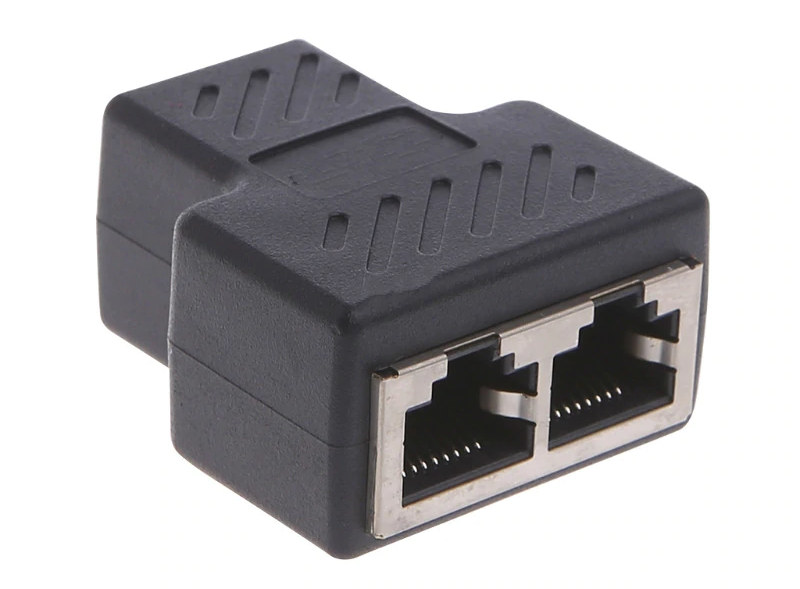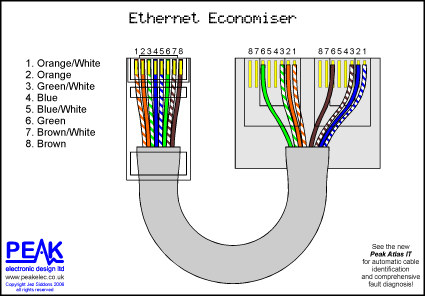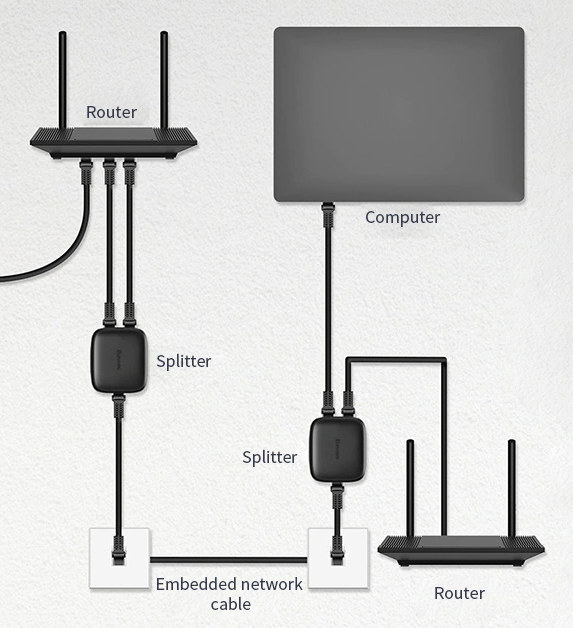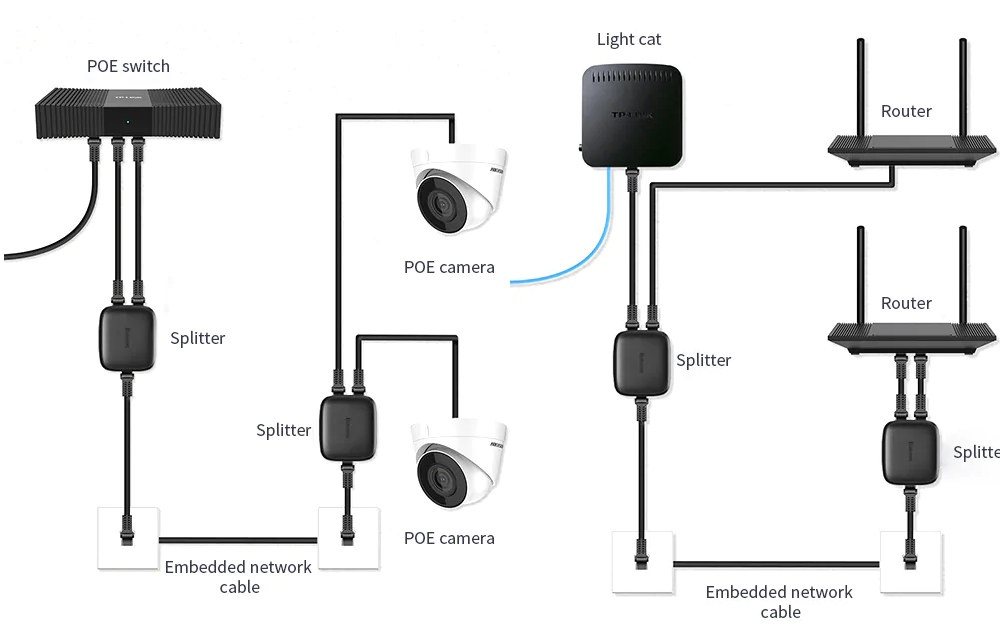When I need to connect more than one device over Ethernet I usually think Ethernet hub or Ethernet switch. I think the former is harder to find these days but was convenient to capture Ethernet packets with Wireshark. I had however never heard about Ethernet splitters until I saw a pair sold on Gearbest for $7.99, but soon found one on Aliexpress for just one dollar plus shipping.

There’s a method to this (apparent) madness, as Cat 5E or grater cables come with 4 twisted pairs of wires, and while all 8 wires are used with Gigabit Ethernet, only 4 wires are needed with Fast Ethernet for speeds up to 100 Mbps. Ethernet splitters are just splitting the four pairs of wires into two dual-pairs to carry 2x 100 Mbps from the router meaning the bandwidth is not shared and you get the full 100 Mbps for each connection on each end on the other side. That also means it does not work if you need Gigabit Ethernet.

One advantage of Ethernet splitters is that they do not require any power source, and with their small size they are quite convenient if you want to extend an Ethernet connection. Some of the use cases include PoE cameras where a power outlet may not be available for an Ethernet switch and any other network topology where you may want to save on cabling for connecting two Fast Ethernet devices.

Jean-Luc started CNX Software in 2010 as a part-time endeavor, before quitting his job as a software engineering manager, and starting to write daily news, and reviews full time later in 2011.
Support CNX Software! Donate via cryptocurrencies, become a Patron on Patreon, or purchase goods on Amazon or Aliexpress






